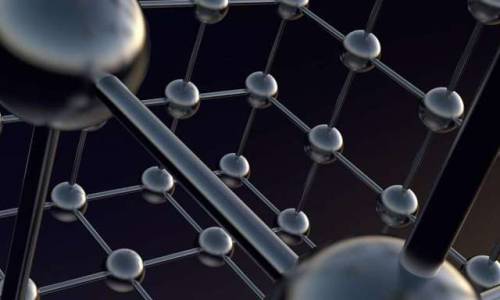#deformation mechanisms
New process can extend lifetime of metals
Stronger, lighter, cheaper materials are the name of the game in advanced manufacturing. Keeping costs down on materials that are equally, if not more, effective than previous ones is how businesses get ahead—and, theoretically, when consumers win.
But what if stronger, lighter and cheaper means shorter lifetimes for materials used in automobiles? That’s the problem an international research team led by Western materials engineer Hamidreza Abdolvand tackled in a new study published by high-impact journals Acta Materialia and Communications Materials.
Abdolvand, along with Western Engineering graduate student Karim Louca and collaborators at the European Synchrotron Radiation Facility and Arts et Métiers ParisTech, discovered important factors contributing to the deformation (changing shape) of metals used in automobiles and nuclear reactors, and developed new models to predict the lifetimes of these materials.
Post link
How to Cut into a Material More Smoothly
A theory confirmed by experiments explains what has been an unpredictable cutting process.
[…]
Slicing through a solid can turn out a continuous band of liberated material or a disorderly sequence of fractured shards. Now researchers have shown that there is a universal transition between these two different ways materials come apart when cut [1]. Others have noted that the depth of the cutting tool determines the material’s response, but the new theory explains why the transition occurs and predicts the depth at which the transition takes place for any relevant material. The theory is supported by new experiments with several different plastics as well as previous data from experiments on other materials. This new understanding may allow manufacturers to design tools that achieve a better surface finish.
Post link
Properties of strained graphene and other strained two-dimensional atomic materials
Salvador Barazza-Lopez, associate professor of physics at the University of Arkansas, is part of a team that published a review article on the properties of strained graphene and other strained two-dimensional atomic materials in the prestigious Reports of Progress in Physics, a review-style journal published by the Institute of Physics in the United Kingdom that has a large impact factor of 14.3.
Materials that are atomically thin can be thought as membranes. Membranes bend to adapt to other materials, and change their properties when pulled from two opposite edges. Electronic and optical properties of atomically-thin membranes are modified as a result of bending and stretching, and the 62-page published article provides a detailed descriptions of these effects.
“This comprehensive project was led by Gerardo G. Naumis at the Institute of Physics National University of Mexico, and it took about one year to be completed.” Barraza-Lopez said. “Besides giving me the opportunity to summarized work performed at Arkansas over the last six years, the two weeks spent working at the Institute were memorable.” Continued access to the Trestles supercomputer at the Arkansas High Performance Computing Center was crucial for completing many of these studies.
Post link
Twin discoveries, ‘eerie’ effect may lead to manufacturing advances
The discovery of a previously unknown type of metal deformation – sinuous flow – and a method to suppress it could lead to more efficient machining and other manufacturing advances by reducing the force and energy required to process metals.
Researchers at Purdue University discovered sinuous flow deformation and also were surprised to discover a potentially simple way to control it, said Srinivasan Chandrasekar, a professor of industrial engineering, who is working with W. Dale Compton, the Lillian M. Gilbreth Distinguished Professor Emeritus of Industrial Engineering, postdoctoral research associate Ho Yeung and graduate student Koushik Viswanathan.
The team discovered the phenomenon by using high-speed microphotography and analysis to study what happens while cutting ductile metals. They found that the metal is deformed into folds while it is being cut – contrary to long-held assumptions that metals are sheared uniformly – and also that sinuous flow can be controlled by suppressing this folding behavior.
“When the metal is sheared during a cutting process it forms these finely spaced folds, which we were able to see for the first time only because of direct observation in real time,” Yeung said.
Post link
Stronger Nuclear Fusion Materials May Be Possible Thanks to Photos of a Tiny Aluminum Crystal
A laser compressing an aluminum crystal provides a clearer view of a material’s plastic deformation, potentially leading to the design of stronger nuclear fusion materials and spacecraft shields.
Imagine dropping a tennis ball onto a bedroom mattress. The tennis ball will bend the mattress a bit, but not permanently – pick the ball back up, and the mattress returns to its original position and strength. Scientists call this an elastic state.
On the other hand, if you drop something heavy – like a refrigerator – the force pushes the mattress into what scientists call a plastic state. The plastic state, in this sense, is not the same as the plastic milk jug in your refrigerator, but rather a permanent rearrangement of the atomic structure of a material. When you remove the refrigerator, the mattress will be compressed and, well, uncomfortable, to say the least.
But a material’s elastic-plastic shift concerns more than mattress comfort. Understanding what happens to a material at the atomic level when it transitions from elastic to plastic under high pressures could allow scientists to design stronger materials for spacecraft and nuclear fusion experiments.
Post link





